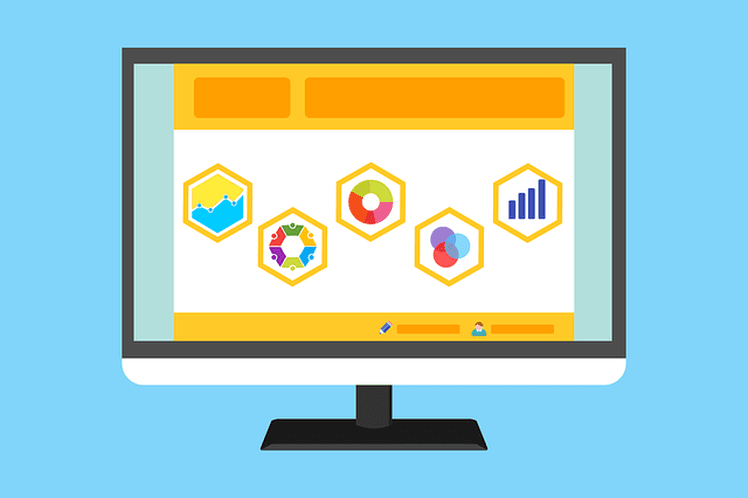Voice of Customer Analytics: How to Run Successful Analysis
Voice of customer insights are key to every organization’s strategy. There’s not much that’s more important than understanding what your customers want, and giving it to them better than your competition.
But getting to crystal clear insights can be a challenge. How can you be sure that you understand how they feel about your services? How do you sift through thousands of data points to arrive at meaningful conclusions?
Voice of customer analytics feeds into developing a comprehensive customer strategy that addresses customer concerns, collects feedback, and improves overall customer experience.
This is where Voice of Customer analytics helps.
In this article, we’re going to cover how to get started with voice of customer analytics, different types of data you should consider, key steps in the process of analyzing your data.
Let’s dive in.
What is Voice of Customer Analytics?
Voice of Customer (VoC) analytics is a systematic approach to gathering, analyzing, and interpreting customer feedback data from various data sources. These may include customer surveys, reviews, social media, or customer support interactions.
Doing voice of customer analytics involves using specialized tools and techniques to extract meaningful insights and trends from unstructured feedback, turning data into action.
Benefits of Voice of Customer Analytics
Voice of customer programs are not new. But not every team is leveraging VoC analytics to drive business strategy, and the ones that do have a key advantage. Great voice of customer data offers:
Insights into customer sentiment: VoC analytics helps businesses gauge customer sentiment accurately, identifying areas of customer satisfaction, and areas that need improvement.
Ability to identify trends: By analyzing customer data over time, businesses can spot emerging trends, preferences, and shifts in customer behaviour, enabling proactive adjustments to strategies and offerings.
Personalized customer experiences: Deep insights from VoC analytics allow businesses to tailor experiences to individual customer needs, fostering loyalty and repeat business.
Data-driven decision making: VoC analytics empowers organizations to make informed, data-driven decisions across departments, aligning strategies with customer feedback and expectations.
Competitive advantage: Businesses that excel in VoC analytics gain a competitive edge by quickly adapting to changing customer needs, enhancing products/services, and delivering exceptional experiences.
Voice of customer analytics and programs are crucial tools for any modern business committed to better understanding and delighting their customers. To give you actionable ideas to build your own program, we pulled together a list of 20 voice of customer examples from leading brands here.

Types of Voice of Customer Analytics Data
There are a handful of different data types, and analysis approaches that are relevant to highlight, when it comes to creating a VoC analytics strategy.
The channel you choose collect data from, and the format of the data, both play a role in determining how you should analyze and measure trends.
Here are the primary types of VoC analytics teams can leverage with their data:
1. Text Analytics
Text analytics involves analyzing unstructured text data from customer feedback sources like surveys, reviews, social media comments, and support interactions.
Use Case: Teams use text analytics to identify key themes, sentiments, trends, and actionable insights from large volumes of unstructured feedback.
Key Features:
Sentiment Analysis: Determine positive, negative, or neutral sentiments shared by customers.
Theme Extraction: Identify common topics or themes mentioned in feedback.
Keyword Analysis: Analyze frequently mentioned keywords or phrases for insights.
2. Speech Analytics
Speech analytics focuses on analyzing spoken interactions between customers and customer service representatives.
Use Case: Businesses use speech analytics to evaluate call centre interactions, identify customer emotions, detect trends, and improve service quality.
Key Features:
Emotion Detection: Identify emotions such as anger, frustration, satisfaction, etc., from voice interactions.
Call Transcription: Convert spoken words into text for analysis and insights.
Keyword Spotting: Identify specific keywords or phrases during customer calls for trend analysis.
3. Social Media Analytics
Social media analytics involves monitoring and analyzing customer conversations, mentions, comments, and reviews across social media platforms.
Use Case: Businesses use social media analytics to track brand sentiment, monitor customer feedback, identify influencers, and manage brand reputation.
Key Features:
Sentiment Tracking: Monitor and analyze sentiment trends related to brand mentions and customer conversations.
Influencer Identification: Identify key influencers and advocates within social media communities.
Trend Analysis: Track trending topics, hashtags, and discussions relevant to the brand or industry.
4. Survey Analytics
Survey analytics focuses on analyzing structured data obtained from customer surveys and feedback forms.
Use Case: Businesses use survey analytics to measure user satisfaction, gather feedback on specific products/services, and assess overall customer experience.
Key Features:
Response Analysis: Analyze survey responses to understand customer preferences, opinions, and feedback.
NPS/Customer Satisfaction Score Analysis: Measure and track Net Promoter Score (NPS), Customer Satisfaction Score (CSAT), and other survey metrics.
Question-Based Insights: Gain insights based on responses to specific survey questions related to product features, pricing, support, etc.
5. Customer Journey Analytics
Customer journey analytics focuses on understanding and optimizing the end-to-end customer experience across touch points and interactions.
Use Case: Businesses use customer journey analytics to identify pain points, optimize touch points, enhance customer interactions, and drive conversions.
Key Features:
Touchpoint Analysis: Identify key touch points in the customer journey and analyze interactions at each stage.
Customer Segmentation: Segment customers based on their journey stages, behaviours, preferences, and needs.
Conversion Funnel Analysis: Analyze customer behaviour and actions throughout the conversion funnel to optimize conversion rates.
6. Predictive Analytics
Predictive analytics leverages historical customer data and advanced modelling techniques to predict future customer behaviours, preferences, and trends.
Use Case: Businesses use predictive analytics for personalized marketing, churn prediction, cross-selling/up-selling opportunities, and proactive customer service.
Key Features:
Churn Prediction: Identify customers at risk of churning based on behavioural patterns and predictive models.
Personalization Recommendations: Recommend personalized products, offers, or content based on predictive insights.
Customer Lifetime Value (CLV) Prediction: Estimate the future value of customers to prioritize high-value segments and strategies.
As a general rule of thumb, it's ideal to blend a handful of data types and sources, into your customer analytics programs. By leveraging data from social media, surveys, and customer journey touch points, you'll benefit from more informed customer analysis and conclusions.

How to Run a Voice of Customer Analytics Program
Running a successful Voice of Customer (VoC) analytics program requires a strategic approach.
In our view, there are seven key phases to work through, spanning data collection, analysis, interpretation, and action.
Here’s a step-by-step guide for how to to get an effective VoC analytics program off the ground:
1. Define Your Goals and Objectives
Getting clear on what you want to do with customer data, before you start collecting it, is always good research practice. Otherwise, you're at risk of infinitely exploring your data without an end in mind on how you're going to improve the business.
For example, if you're the Head of Insights at an eCommerce company, your goals might include enhancing customer satisfaction rates, improving the quality of your products, and increasing customer retention rates.
Then when you dive into the data, you can bring meaningful insights back to impact the most important areas of improvement.
Actions:
Define specific objectives like improving CSAT scores, reducing customer churn rates by X%, and identifying key drivers of satisfaction.
Align your VoC program goals with broader business objectives and KPIs.
2. Collect Relevant Data Sources
As we demonstrated above, there are a handful of different channels, and data types you can leverage to collect customer feedback, when building out a voice of customer program.
Customer surveys, online reviews, social media comments, contact centre interactions, and website feedback are all valid and useful sources to consider.
Actions:
Implement data collection mechanisms across multiple touch points of your business, and capture diverse feedback.
Integrate feedback data from CRM systems, survey tools, social media monitoring platforms, and other relevant sources.
3. Choose the Right VoC Analytics Tools
There are a ton of different tools out there to choose from. Some dive deep into specialty areas like text analytics, while others focus on external brand and media monitoring with social listening. Some hone in on survey management and data collection.
A key capability you’ll want to look for in your tool is being able to connect any data source into one central place for analysis. You want a ‘data-agnostic’ tool. Without this ability, you’ll end up wasting a lot of time piecing together your data and conclusions.
At Kapiche, we focus on providing leading text analytics software where teams can get the fastest time to insight from any data source. For a list of top tools to support elements of your program, check out our article comparing top voice of customer tools.
Actions:
Evaluate and select VoC analytics tools based on your specific requirements such as text analytics capabilities, sentiment analysis, reporting dashboards, and scalability.
Ensure the chosen tools support data integration, analysis automation, and actionable insights generation.
4. Analyze VoC Data Effectively
Once you have your data routing into a tool of choice, you'll want to get to analyzing it.
A great tool should do a lot of the heavy lifting for you. Some of the things you'll want to dive deep into include sentiment analysis of solicited and unsolicited customer feedback, trend analysis of any common issues, customer preference patterns, and tracking your program KPIs like NPS or CSAT scores.
Actions:
Use text analytics to extract sentiments, themes, and keywords from unstructured feedback data.
Utilize survey analysis techniques to measure satisfaction scores, identify trends over time, and segment feedback based on demographics or product usage.
5. Interpret Insights and Identify Actionable Steps
Getting data categorized and grouped together is only the first step to getting meaning out of customer feedback. You still have to interpret what it means, in relation to your business operations.
Look out for high satisfaction scores in relation to particular product features, recurring negative feedback about aspects of your business like shipping delays, or positive sentiment around customer support interactions.
The insights only become actionable when tied to something you can effectively change or improve about the way you're running your business right now. You’ll also want a system in place to share relevant insights back to the right teams. One way to do this is to leverage the dashboard view in your cx tool, giving stakeholders access to key data summaries and trends.
Actions:
Interpret data insights in the context of business goals and customer expectations.
Prioritize action items based on impact and feasibility, such as addressing critical issues, improving product features, or enhancing service processes.
6. Communicate Insights Effectively
Your insights are only as meaningful as your ability to communicate them back to the organization. Once you arrive at key conclusions for various areas of the business, you’ll need to collate those findings into a format that stakeholders find accessible and useful.
For some, this might mean creating a monthly insights report highlighting movement of key metrics. For others, this might mean a weekly summary of customer responses to a new set of features you launched in beta.
You’ll want to choose a feedback analytics platform with the capability to do quick and easy reporting. Look for features with the ability to detect significant changes in your key metrics, and intuitive AI-powered data summaries that tell decision-makers what they need to know, when they need to know it.
Actions:
Identify the key stakeholders you need to communicate to, how often, and what formats will best resonate.
Create an insights report that tells each stakeholder exactly what they need to know and action, rather than giving them all the data.
7. Implement Changes and Monitor Impact
Once you start to make changes in line with the insights you've gathered, you'll want to keep an eye on your data to spot any signals indicating your changes are working.
If you're working on revising your shipping processes to reduce delays, you'll want to see complaints about that decrease. Optimizing your website UX based on feedback should also drive a positive life in engagement signals on your site, as well as conversions.
You can also use real-time monitoring in your feedback analytics tool to keep an eye on how specific launches or targeted marketing campaigns are performing for high-value customer segments.
Actions:
Collaborate with cross-functional teams to implement changes derived from VoC insights.
Monitor key metrics such as CSAT scores, NPS, customer retention rates, and customer feedback sentiment post-implementation.
8. Iterate and Continuously Improve
With all these pieces in place, you'll want to set up a rhythm where you regularly check in with performance, and review what can be improved.
One rhythm could look like doing monthly feedback analysis on an area of the business, quarterly reviews of VoC program effectiveness, and actioning improvements within this cycle to respond to feedback trends.
Actions:
Establish a feedback loop for continuous data collection, analysis, and improvement.
Regularly review VoC program performance, iterate on strategies, and adapt to evolving customer needs and market dynamics.
By following these steps and leveraging VoC analytics tools effectively, your team will be well-equipped to grasp deeper understanding of your customer insights, drive informed decision-making, and deliver exceptional customer experiences that foster loyalty and growth.

Key Metrics to Track in Voice of Customer Analytics
Tracking key metrics is crucial to measure the effectiveness of your Voice of Customer (VoC) analytics program, at any stage in the process. Staying laser focused on your outcome with customer research, is how you ensure alignment with business objectives, and that your efforts move the needle.
Below, we've outlined the key metrics you can consider tracking when setting up a VoC analytics program:
1. Customer Satisfaction Score (CSAT)
What it is: CSAT measures the level of satisfaction customers have with your products or services based on their recent experiences.
How it helps: This metric is a great one to help quantify satisfaction levels, identify areas for improvement, and gauge overall customer sentiment.
2. Net Promoter Score (NPS)
What it is: NPS measures customer loyalty by asking how likely customers are to recommend your company to others on a scale of 0-10.
How it helps: it provides insights into customer advocacy, helps identify promoters and detractors, and guides strategies to improve customer retention and referrals.
3. Customer Effort Score (CES)
What it is: CES measures the ease of customers' interactions with your company, products, or services, typically on a scale from easy to difficult.
How it helps: CES indicates the level of effort customers must exert to achieve their goals, highlighting areas where friction exists in the customer journey.
4. Retention Rates
What it is: Retention rates measure the percentage of customers retained over a specific period, reflecting customer loyalty and satisfaction levels.
How it helps: High retention rates indicate satisfied and loyal customers, while declining rates may signal issues requiring attention, such as product quality, service levels, or competitive challenges.
5. Customer Churn Rate
What it is: Churn rate measures the percentage of customers who stop using your products or services within a given time frame.
How it helps: Monitoring churn rates helps identify factors contributing to customer attrition, such as poor experiences, unmet expectations, or competitive pressures.
By tracking these key metrics, and combining quantitative data with qualitative insights from VoC analytics, you'll be well on your way to a comprehensive understanding of customer feedback.
In summary
Voice of customer analytics plays a pivotal role in effective business strategy. By harnessing the power of VoC data, businesses can make more data-driven decisions, enhance customer experiences, and drive sustainable growth.
To recap, here are the takeaways for rolling out a great VoC analytics program:
Understand the importance of VoC Analytics: VoC analytics is key to understanding the "voice" of your customers. You want to analyze feedback, sentiments, and interactions across various touch points, and work this into your business strategy.
Types of VoC Analytics: there are many types of data and data sources, and it's ideal to include a blend of them in your strategy. You can leverage various types including sentiment analysis, text analytics, or customer journey analysis to get to actionable insights.
How to Run a VoC Analytics Program: follow a structured approach to move through goal setting, data collection, tool selection, analysis, interpretation, and of course action to ensure you get ROI from your efforts. Leveraging the right tools throughout the process will help you be efficient.
Key Metrics to Track: Decide on the key metrics best aligned to your VoC and broader business goals like CSAT, NPS, CES, retention rates, and churn rates, and monitor to make sure your data analysis and improvement efforts are tied to improving business performance.
Continuous Improvement: VoC analytics is not a one-time activity but a continuous process aimed at continuous improvement. Regular monitoring, analysis, and adaptation based on customer feedback and insights are essential to see sustained success.
As you embark on your journey to harness the power of VoC analytics, Kapiche is a ready partner for your growth. Our mission is to make it as easy as possible for you to turn your customers' voices into actionable strategies, with the most seamless and comprehensive text analytics tool on the market.
To explore how we might be able to help, check out an on-demand demo of the Kapiche platform today, and feel free to reach out to us for any questions.







